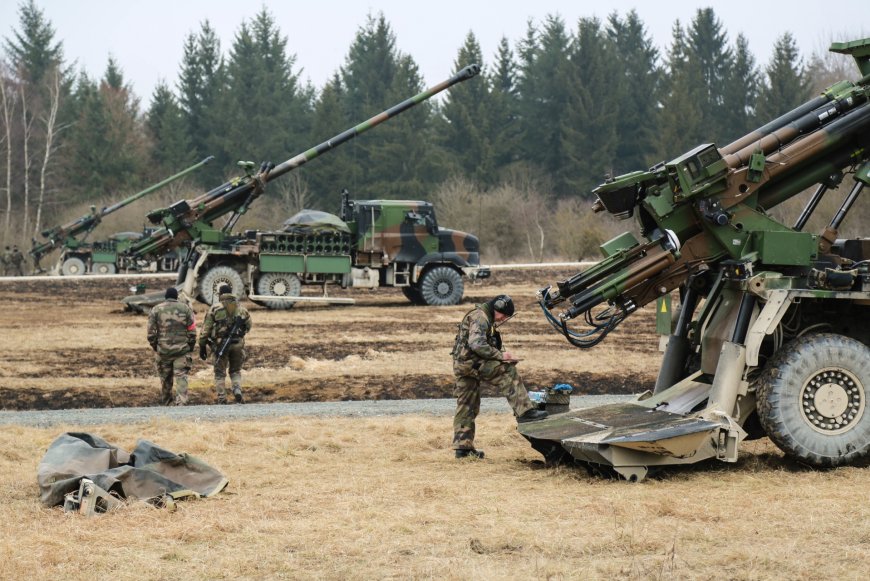A New Cold War? Europe’s Defense Surge Hits Record Levels
Europe's weapons manufacturing has exploded, tripling factory expansion and signaling strategic shifts in defense policy since the Cold War.

Europe — August 2025 — In a transformation unseen since the Cold War, Europe's defense sector is undergoing an unprecedented industrial boom. Today’s weapons factories are expanding at three times the peacetime rate, adding over 7 million square meters of industrial space to support a surging demand for ammunition, missiles, and military vehicles. This surge has been largely driven by the fallout of Russia’s invasion of Ukraine, internal strategic reviews, and growing uncertainties about U.S. commitment to NATO. Financial TimesThe Kyiv Independent
Factories Rising: A Visible Retooling of Europe
Satellite and radar data, analyzed by the Financial Times, reveals what officials have been calling a historic “arms-making boom.” Across 150 factories, construction and retrofit efforts are underway at three times the normal pace. Governments have tapped into EU funds—most notably from the €500 million ASAP program—to fuel rapid expansions, even as bottlenecks persist in missile engines and explosive materials. Financial Times
Political Catalysts: From ReArm Europe to Readiness 2030
European Defence Industrial Strategy
In March 2024, as part of an EU-led shift toward a “war economy,” leaders advanced the European Defence Industrial Strategy, committing to increased regional procurement, collaboration, and reindustrialization. Wikipedia+1
Readiness 2030 Plan
Building on that foundation, President Ursula von der Leyen’s Readiness 2030 initiative proposed mobilizing up to €800 billion over several years to strengthen Europe’s defense infrastructure. Measures include flexible fiscal rules, defense loans, repurposing cohesion funds, and a private capital “savings union.” Wikipedia
Country Snapshots: Who's Leading the Rearmament
-
Germany remains at the forefront, with planned defense spending reaching €162 billion by 2029—representing a 70% increase. Rheinmetall, a key supplier, projects €80 billion worth of orders by mid-2026, securing it a central seat in Europe’s rearmament. Notably, CEO Armin Papperger forecasts cost reductions in ammunition, tanks, and artillery thanks to economies of scale. Financial Times+1
-
France, Europe's longstanding leader in weapons exports, delivered €18 billion in orders in 2024. Key assets include nuclear submarines, Rafale fighter jets, and advanced artillery systems—highlighting France’s industrial depth. Polytechnique Insights
-
Sweden has also ramped up production. A €150 million investment aims to quadruple its anti-tank weapon output by 2025, with employment climbing to over 28,000 in its defense sector. Le Monde.fr
-
Britain is embarking on a bold shift, building “ITAR-free” explosives independently from U.S. suppliers. Using containerized micro-factories, BAE Systems aims to increase explosives output by sixteenfold. The Times
Structural Challenges: What Could Stall the Surge
Even as factories rise, long-standing structural weaknesses could temper Europe’s rearmament aspirations:
-
Fragmented procurement culture: National priorities and rigid fiscal rules limit multinational defense projects, dampening efficiency. Goldman SachsAP News
-
Reliance on U.S. hardware: Many European militaries still depend on systems like F-35 jets or Patriot missiles, delaying full autonomy. The GuardianBusiness Insider
-
Supply chain fragility: The demise of just-in-time delivery has exposed vulnerabilities in armored vehicle and ammunition supply. Producers are now stockpiling and decentralizing production. European Security & Defence
Economic Upsides: Defense as Growth Engine
The manufacturing surge isn't just about security—it’s also a driver of economic activity. Defense contractors are seeing stock rallies of up to 50%, labor demand is rising, and regional GDPs are seeing short-term boosts. As economist Daniel Kral from Oxford Economics notes, defense spending could pull Europe out of stagnation—though its long-term productivity gains remain debated. POLITICOboringmoney.co.uk
Summary Table
| Theme | Details |
|---|---|
| Surge Scale | Triple factory expansion, 7M+ sqm added since 2022 |
| Key Drivers | Russia-Ukraine war, EU strategy, NATO uncertainty |
| Major Players | Germany (€162B by 2029), France, Sweden, UK-style retooling |
| Strategic Plans | EDIS, Readiness 2030, ASAP funding |
| Challenges Ahead | Fragmented procurement, U.S. dependence, supply chain fragility |
| Economic Effects | Stock gains, job growth, temporary GDP boost |
Looking Ahead
Europe has entered a phase of rapid rearmament that mirrors Cold War dynamics—yet with modern tools and motivations. How well the continent addresses its industrial fragmentation, supply chain fragility, and external dependencies will determine how well armed and autonomous it truly becomes. With strategic initiatives like Readiness 2030 and deepening national commitments, policymakers have begun the rearmament needed to deter tomorrow’s threats—but execution remains key.











